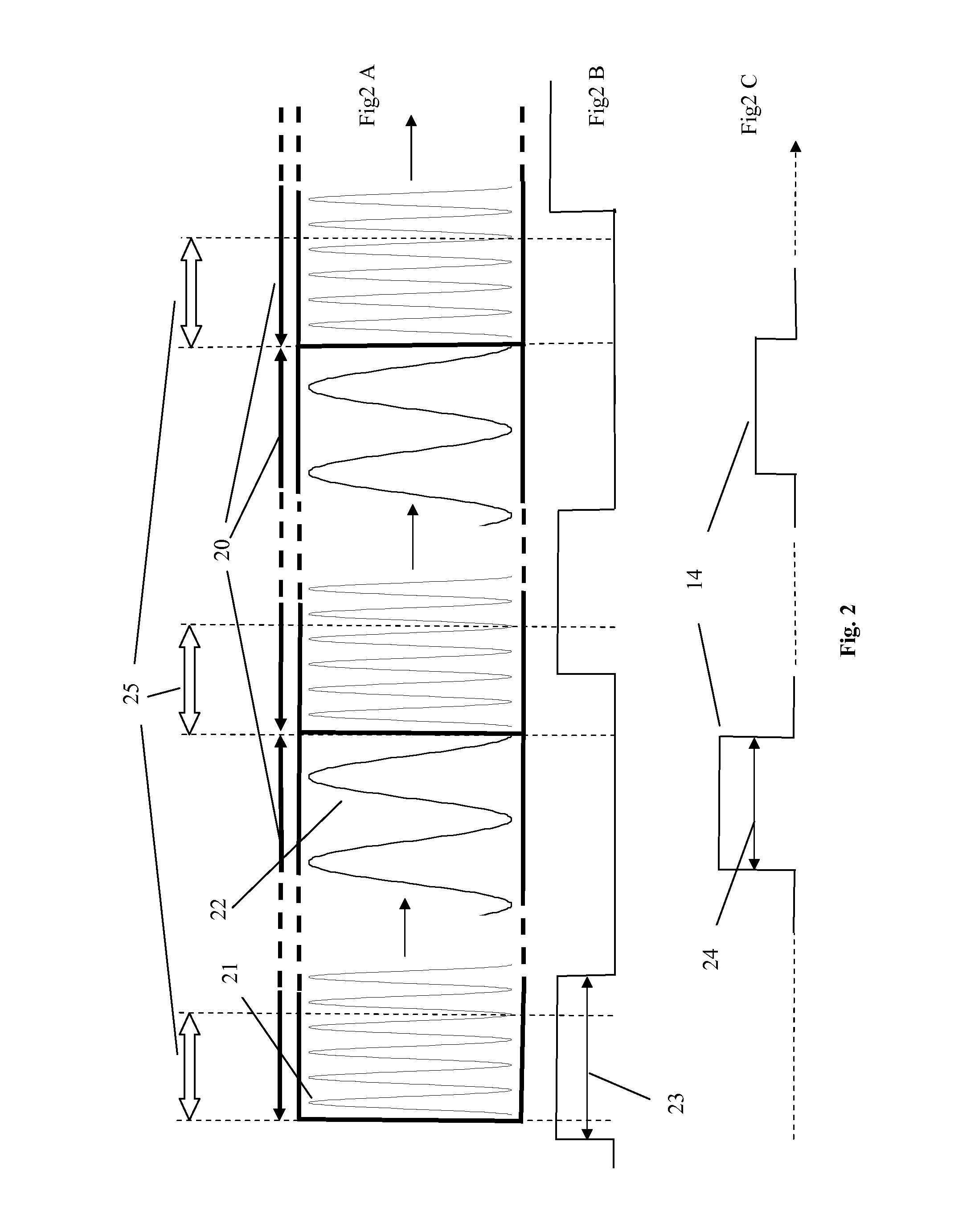Device And Method For Particle Beam Production
a particle beam and accelerator technology, applied in the field of pulse beam accelerators, can solve the problems of inability to use synchrocyclotrons in combination with synchrocyclotrons, limited synchrocyclotrons in current proton therapy facilities, and difficult to use beam time structures in combination with spot scanning techniques
- Summary
- Abstract
- Description
- Claims
- Application Information
AI Technical Summary
Benefits of technology
Problems solved by technology
Method used
Image
Examples
Embodiment Construction
[0067]The present invention will be now described in detail in relation to the appended drawings. However, it is evident that a person skilled in the art may conceive several equivalent embodiments or other ways of executing the present invention. The spirit and the scope of the present invention are therefore limited only by the terms of the claims.
[0068]FIG. 1 shows a schematic representation of a particle accelerator 10 and its controls according to the invention and some additional elements. The particle accelerator 10 (e.g. synchrocyclotron, linear accelerator, fixed field alternating gradient accelerator, . . . ) comprises an ion source 11, a radio frequency (RF) acceleration system 12 and means for varying 17 the number of particles within a beam pulse. Taking the example of a 250 MeV proton synchrocyclotron, typical RF acceleration frequencies are ranging between 50 and 100 MHz. In a synchrocyclotron, the RF acceleration system produces an RF wave with a time varying frequen...
PUM
 Login to View More
Login to View More Abstract
Description
Claims
Application Information
 Login to View More
Login to View More - R&D
- Intellectual Property
- Life Sciences
- Materials
- Tech Scout
- Unparalleled Data Quality
- Higher Quality Content
- 60% Fewer Hallucinations
Browse by: Latest US Patents, China's latest patents, Technical Efficacy Thesaurus, Application Domain, Technology Topic, Popular Technical Reports.
© 2025 PatSnap. All rights reserved.Legal|Privacy policy|Modern Slavery Act Transparency Statement|Sitemap|About US| Contact US: help@patsnap.com



